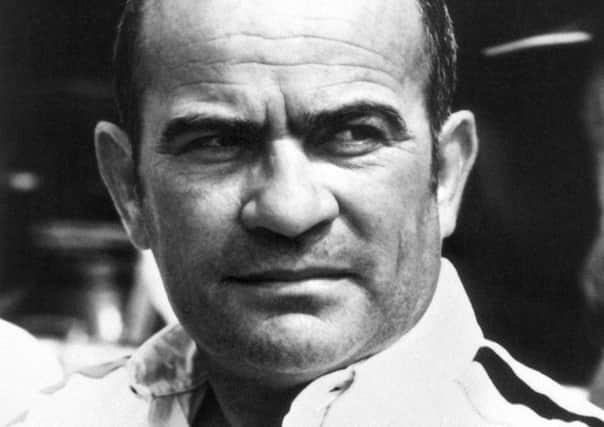Obituary: Guy Ligier, Formula 1 driver and team owner


EVEN Formula 1 fans may not know exactly who Guy Ligier was, but those of a certain age will certainly remember his surname. Although Team Ligier was never up there with Ferrari or McLaren, it was a significant competitor in motor racing for 20 years, from the mid-1970s through the mid-90s. Its highlight was winning the sport’s greatest feature event, the Monaco Grand Prix, in 1996 with Frenchman Olivier Panis taking the chequered flag after one of the most topsy-turvy Grands Prix of all time.
Present-day TV commentators and former F1 drivers David Coulthard and Johnny Herbert came second and third in that wet weather, incident-saturated race around the streets and past the casino of Monte Carlo. The loveable Herbert had the historic honour of being on the podium while finishing last – of the three drivers who completed the circuit during the clock time.
Advertisement
Hide AdAdvertisement
Hide AdTwenty years on, Panis remains the last French driver to win an F1 Grand Prix and the names Panis and Ligier are still revered in their home country, in motor racing circles and beyond.
Less known is the fact that the late Scot Tom Walkinshaw, an outstanding Jaguar sports car driver who was born on a farm near Penicuik, Midlothian, took over the helm at Ligier when Guy Ligier stepped back.
Walkinshaw had helped the Benetton team reach the heights, had introduced the soon-to-be famous race car designer Ross Brawn to the top league and had helped a young driver called Michael Schumacher to make his name.
At one point, Walkinshaw was thought to have owned the majority shares in Ligier but that is a mystery my friend Tom took to his grave.
Guy Ligier himself was a racing driver, one of the old school, not with a rich daddy to buy him a go-kart, more of the Jackie Stewart ilk. (Sir) Jackie was, as he learned late in life, dyslexic and therefore failed his 11-Plus, and yet became arguably the best and best-loved F1 driver of all time.
Ligier started off driving bulldozers, not just for the wages, but because he saw a future for bulldozers in agricultural France. His friends recalled that they had never seen bulldozers driven so fast.
In the days when steering wheels were for turning and not for playing high-speed play station, Ligier was a useful F1 driver. He took part in 12 Grands Prix, scoring only one championship point at the German Nürburgring in 1967.
On the track, he finished eighth – in those days out of the points – but two of those who finished in front of him were F2 cars, ineligible for F1 points, and so Ligier got one point. To put that in context, possibly the world’s best-ever racing drivers, Sir Jackie Stewart and the should-be-Sir Jim Clark, did not finish that day. Jimmy, before his death, and Jackie always said Guy Ligier was a credit, sometimes a controversial one, to the sport.
Advertisement
Hide AdAdvertisement
Hide AdLigier also took part in the world’s other great motor racing event outside Monaco, the 24 Heures of Le Mans, at the wheel of a Porsche and later his own Ligier. His Team Ligier still competes at Le Mans, this year finishing third and fourth in their class (way behind the big boys) in Ligier-Nissans, one of them co-driven by Englishman Sam Bird.
Guy Camille Ligier was born on 12 July, 1930, in Vichy, in the Auvergne region of central France, at the time a thermal baths spa resort which attracted health tourists from throughout France and far beyond. He was orphaned at the age of seven. Days before his tenth birthday, his home town gained new-found and lasting fame – most would say infamy – as the “capital” of so-called Vichy France, the regime which collaborated with the Nazi occupiers until all of France was liberated by the Allies. Vichy is now a twin town of Dunfermline.
Ligier was a teenage butcher’s assistant in the town – already proud because so many other butcher’s assistants had changed the world – when his skills as a rower and rugby player were noticed. He rowed on the local Allier river and won several French championships. He also played for the French national rugby team’s B-side, never quite making into the top line-up, probably because his nation had been plunged into war and occupation.
When bulldozers got too slow for him, he began racing motorbikes, followed by the various stages of single-seater racing cars, from Formula Junior upwards. His career was aided by his friend François Mitterrand, who helped win him sponsorship from the then super cool cigarette company Gitanes, the petrol company Elf, the Renault car company and the national lottery.
At that epoch of Formula 1 history, France was cool, Gitanes and Gauloises were cool, Belmondo was cool, the racing drivers were the best-looking in the history of mankind, Monaco was formally a principality but it was very, very French and Princess Caroline was both gorgeous and single. As if to emphasise the point, Guy Ligier adoped the Gitanes dark blue for his racing colours.
Ligier went on to buy the assets of the French Matra team, which had become famous largely through Jackie Stewart, and signed up his French compatriots Jacques Laffite, Patrick Depailler and Didier Pironi. By the time Olivier Panis took a Ligier to victory at Monaco, Guy Ligier had sold the company but his name remained on the car and entered F1 history.
Ligier never got much credit outside France for the fact that he, with Mitterrand’s backing, pushed for the reconstruction of the Magny-Cours racing circuit which would go on to host the French F1 Grand Prix until 2008, when the F1 powers-that-wannabe – Fifa-like – decided that the wine and perks they were being offered did not cut it. F1 supremo Bernie Ecclestone says he will consider a return to F1 in France when he feels it appropriate.